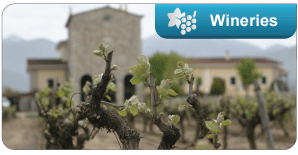Byzantine times
In the early 4th century, the capital of the Roman Empire moved to Byzantium (324-1453) and was named Constantinople after Emperor Constantine, its founder. Christianity had become Byzantium’s official religion and had spread throughout the Empire (two centuries before the fall of Constantinople, a Christian saint, Agios Tryfon, would become the patron saint of vintners). For the next millennium, a mighty civilization would develop in the Greek domain, retaining from the ancient Greek civilization, the language and the timeless Greek winegrowing and winemaking tradition which went towards the production of Byzantine wine. Some winegrowing techniques would be preserved intact during Byzantine times. Others would be perfected. In any case, Greek wine would continue to play a significant commercial as well as social role. Christianity would act as a catalyst in the preservation of wine’s historic continuity in Greece, with the vine literally “flowering” in Byzantine art. The monasteries would engage in winegrowing (Mount Athos) and the sacrament of Holy Communion would necessitate sweet wine found among the renowned ones whose production on the Greek islands had continued.
However, despite the support it had been given durring Byzantine times, winegrowing in the Greek territory would still go through trials and tribulations. Hostile invasions in continental Greece and pirate raids on the Greek islands would come to disrupt the permanence and tranquility vines need to prosper, although there were certain time periods which did witness the comeback of Greek wines. On the other hand, many were the areas in Greece, headed by the Aegean islands and Crete with its Passos (Passum) wine, which briskly engaged in exporting their wines via the sea routes of wine and in supplying with choice wines the lavish banquets of the Byzantine emperors.


